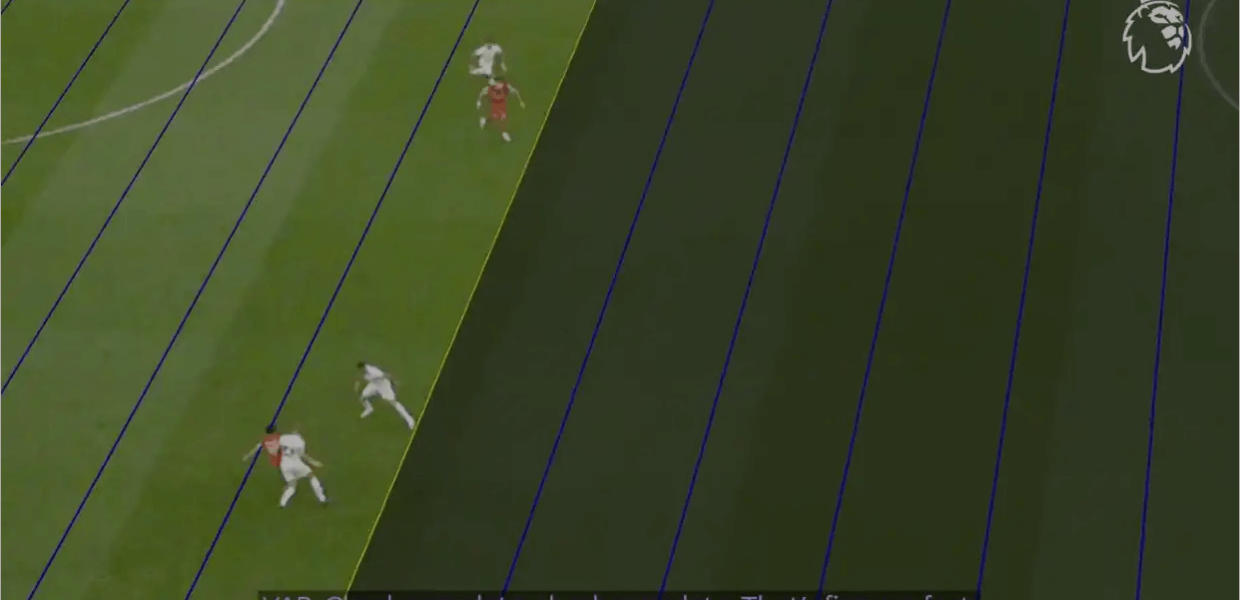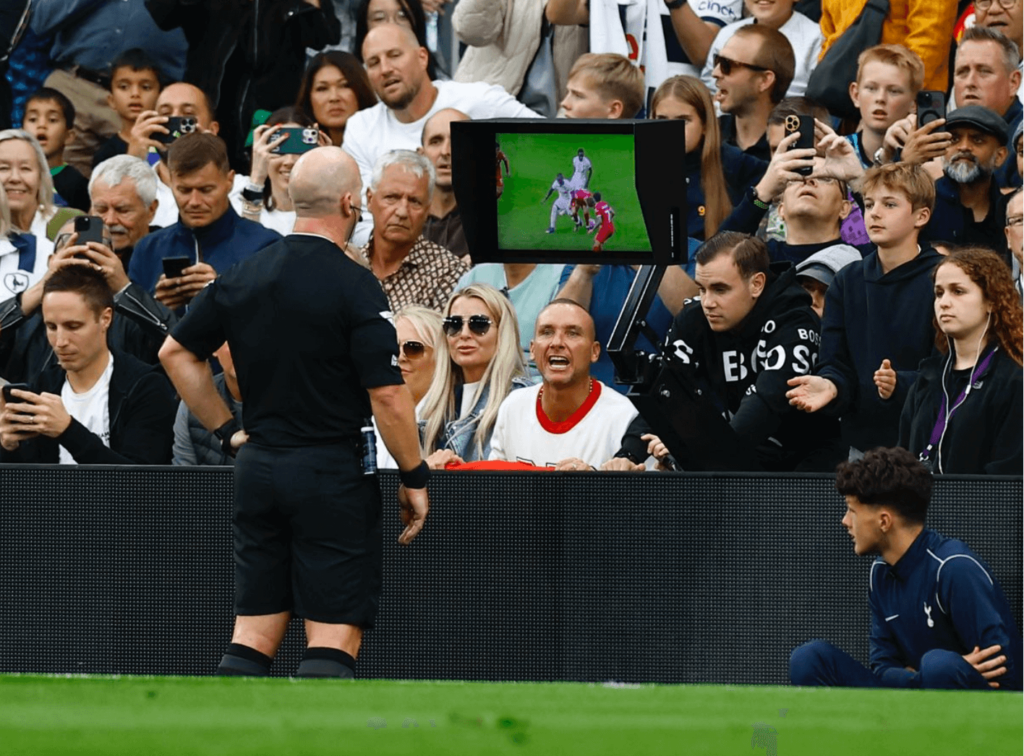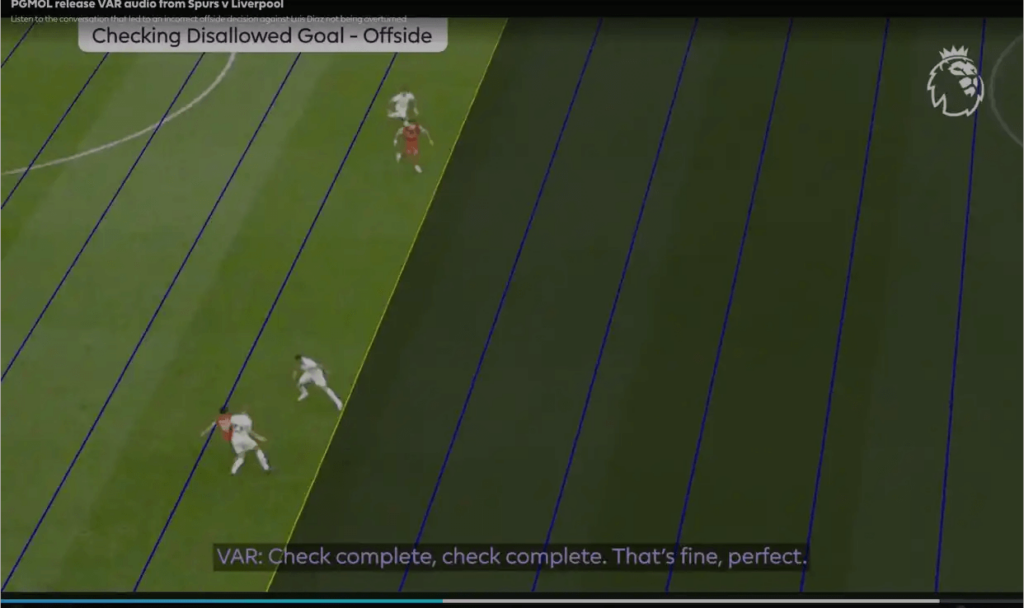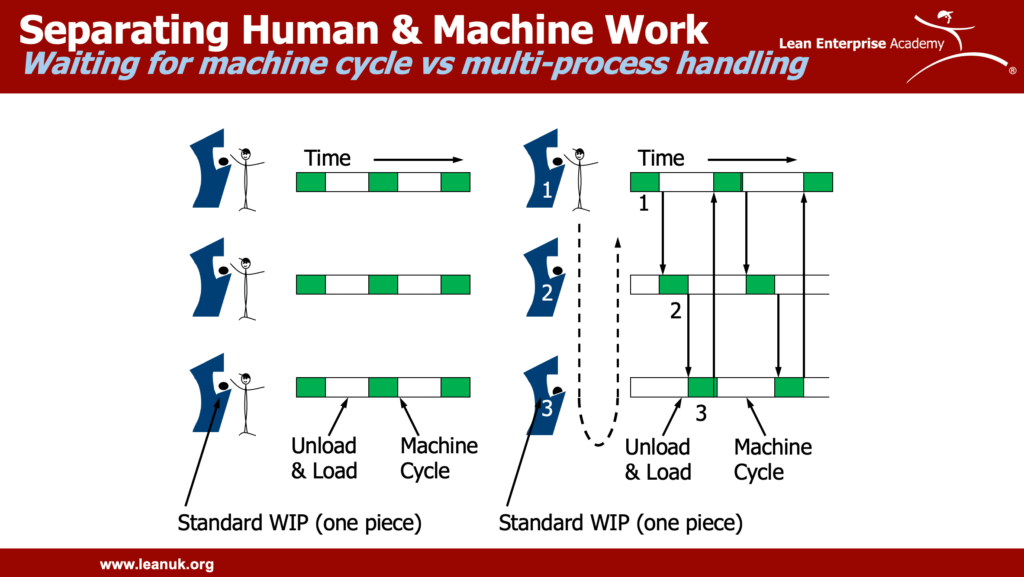
Liverpool lost 2-1 to Tottenham Hotspur in the Premier League on September 30, 2023, in a game that was marred by controversial Video Assistant Referee (VAR) decisions. The game provided additional examples of the problems that have plagued VAR in the Premier League since its introduction in 2019. The system has been criticised for being inconsistent and for leading to several controversial decisions. Football isn’t the only sector facing challenges when introducing and using technology. The business world has its fair share too. What do lean thinkers have to say about lean and technology? Does lean thinking offer any insight into how we can manage these decisions more effectively? How do we decide how much technology we have and how much we automate?
What Happened?
As background, back to the game. There were two VAR instances that had an impact on this match. On 26 minutes, Curtis Jones was given a red card for a foul on Yves Bissouma. The referee (Simon Hooper) was called to the VAR touchline screen. Presented on the screen was a freeze frame of Jones’ foot over the ball, touching Bissouma’s ankle. The display of the image rather than seeing a replay of the incident could well have influenced the referee’s decision. With Liverpool reduced to 10 on-field players the game and management of it inevitably changed.

However, this was only the first VAR intervention to impact this game. In the 33rd minute, Liverpool thought they had taken the lead through Luis Díaz, but the goal was ruled out for offside after a VAR review. Replays during the match and subsequently show Díaz was clearly onside. The goal was legitimate. But the VAR and his assistant did not over rule the incorrect on-field decision. The match remained goaless.

Dialogue from The Professional Game Match Officials
The Professional Game Match Officials Ltd (PGMOL) publicly released audio. The dialogue reveals that VAR Darren England mistakenly believed the on-field decision had been to award the goal, leading him to tell the on-field referee that the “check was complete.” After England and the assistant VAR (AVAR) Dan Cook were alerted to their mistake by the replay operator when the goal wasn’t awarded, they repeatedly said they could not intervene as the game had restarted.
“Can’t do anything,” said England as the replay operator asked for the game to be stopped.
In frantic exchange, the replay operator says: “Oli’s calling in to say delay the game. The decision is onside. “Oli” is Oli Kohout, the VAR Ops Executive. The VAR maintained that the game could not be stopped as it had restarted. The on-field referee Simon Hooper was informed of the mistake at half time.
PGMOL Statement
“The review of the on-field and VAR decision-making processes and application of the decision-making principles has identified the following key learnings to mitigate against the risk of a future error:
– Guidance to Video Match Officials has always emphasised the need for efficiency, but never at the expense of accuracy. This principle will be clearly reiterated
– A new VAR Communication Protocol will be developed to enhance the clarity of communication between the referee and the VAR team in relation to on-field decisions
– As an additional step to the process, the VAR will confirm the outcome of the VAR check process with the AVAR before confirming the final decision to the on-field officials
“PGMOL are committed to enhancing VAR performance through a new training programme which started this season and focuses on process and best practice for all VARs, AVARs and Replay Operators in their specific roles. While we have a number of FIFA-recognised VARs, work is ongoing to create a dedicated pool of VAR specialists.
“The VAR and AVAR in question were removed from their remaining fixtures in Match Round 7 in the Premier League and have not been included in the appointments for Match Round 8 this weekend.
“PGMOL and The FA have also agreed to review the policy to allow match officials to officiate matches outside of FIFA or UEFA appointments.”
What would a Lean Thinker Do?
What is our Value Driven Purpose: What problem are we trying to solve?
- Focus on Value for Customers. Most lean thinkers would find it difficult to disagree with the statement that “Guidance to Video Match Officials has always emphasised the need for efficiency, but never at the expense of accuracy.” But is that enough? Fans (customers) want to watch games that “flow.” So, find the right balance between intervention and pure on-pitch activity. It is challenging but must be managed.
How to do and improve the actual work?
- What is the work and what are the standards? Clearly the dialogue between the VAR and on-pitch officials is ambiguous. When the VAR stated, “That’s fine” and “Check complete, check complete. That’s fine, perfect.” it could mean either the player is offside or that the goal is good. What are the standards? Radiotelephony procedures already exist. They include various techniques to clarify, simplify and standaridise spoken communications over two-way radios. The armed forces, civil aviation, police and emergency services use them. Investigating and experimenting with such processes to develop standards suitable for the situation would be useful.
- Use “Jidoka.” This is providing operators the ability to detect when an abnormal condition occurs and immediately stop work. This enables operators to build in quality at each process. The replay operator in the Dias goal clearly observes an error. However, he isn’t empowered to stop play (stop the line.) Moreover, neither was the VAR once the game had resumed even though all off pitch officials now knew of the mistake. It’s akin to carrying on building a manufactured product knowing that there are a whole host of defects or missing items.
How do we develop the capabilities we need?
- Address the capabilities required to do the work. The statement “A new VAR Communication Protocol will be developed to enhance the clarity of communication between the referee and the VAR team in relation to on-field decisions” may well be necessary, but is it sufficient? What are the capabilities required. How are they learned? Who owns them to keep them updated? How are they assessed?
What management system and leadership behaviours are required to support the new way of working?
- Define the management system necessary to keep the game flowing. The PGMOL have made changes to their management system. But they’ve added a layer of activity as follows: “As an additional step to the process, the VAR will confirm the outcome of the VAR check process with the AVAR before confirming the final decision to the on-field officials.” This will actually lengthen the lead time of the response in all cases. Perhaps if value is defined more clearly they would be thinking how to do the work right, first time rather than adding an extra step for every decision.
What is our underlying thinking that constitutes the culture?
- Assess your underlying thinking and assumptions. Systems that utilise jidoka have different underlying thinking to that employed traditionally. It appears that the PGMOL don’t know about jidoka. They haven’t addressed the issue that they knew they had made a mistake but carried on regardless. The countermeasure “The VAR and AVAR in question were removed from their remaining fixtures in Match Round 7 in the Premier League and have not been included in the appointments for Match Round 8 this weekend” does little to drive out fear of making errors from the frontline worker.
In other words, apply the questions in the Lean Transformation Framework.

Lean and technology
One of the key attributes of “the beautiful game” is that when played and officiated well it flows. The value for fans occurs largely when the ball is in play. The implementation of VAR hasn’t just been about technology. Developing the change (like any business change) is a socio-technological challenge. Apart from goal line technology the game does not automate and mistake proof decisions. Instead a layer of off-pitch personnel act as additional eyes. This lengthens the lead-time. The real-time feedback fans used to get now has delays – we are unsure whether we should celebrate a goal.
Football can look at this socio-technical change and borrow some principles and practices from the lean thinkers at Toyota. When thinking lean, technology is appropriate when a series of conditions are met. For example:
- If there are safety issues with doing the work we should try to use technology and automation.
- If it’s difficult for us to meet the quality standard when doing the work manually we can seek technological countermeasures.
- If the team member has overburden we investigate the use of technology.
Developing technology “solutions” without understanding the purpose you are trying to meet or the problem you are trying to solve can be extremely wasteful and therefore not lean.
Summary – Lean and technology
Perhaps such a framework would help administrators and stakeholders determine the direction officiating the game should take. We all love discussing and dissecting the validity of the on-pitch decisions we see. But we like the game to flow. With a better understanding of value we would have a much better chance of developing effective countermeasures for the game. You never know, we might even get an officiating version of multiprocess handling – but that’s another blog post for another time.
